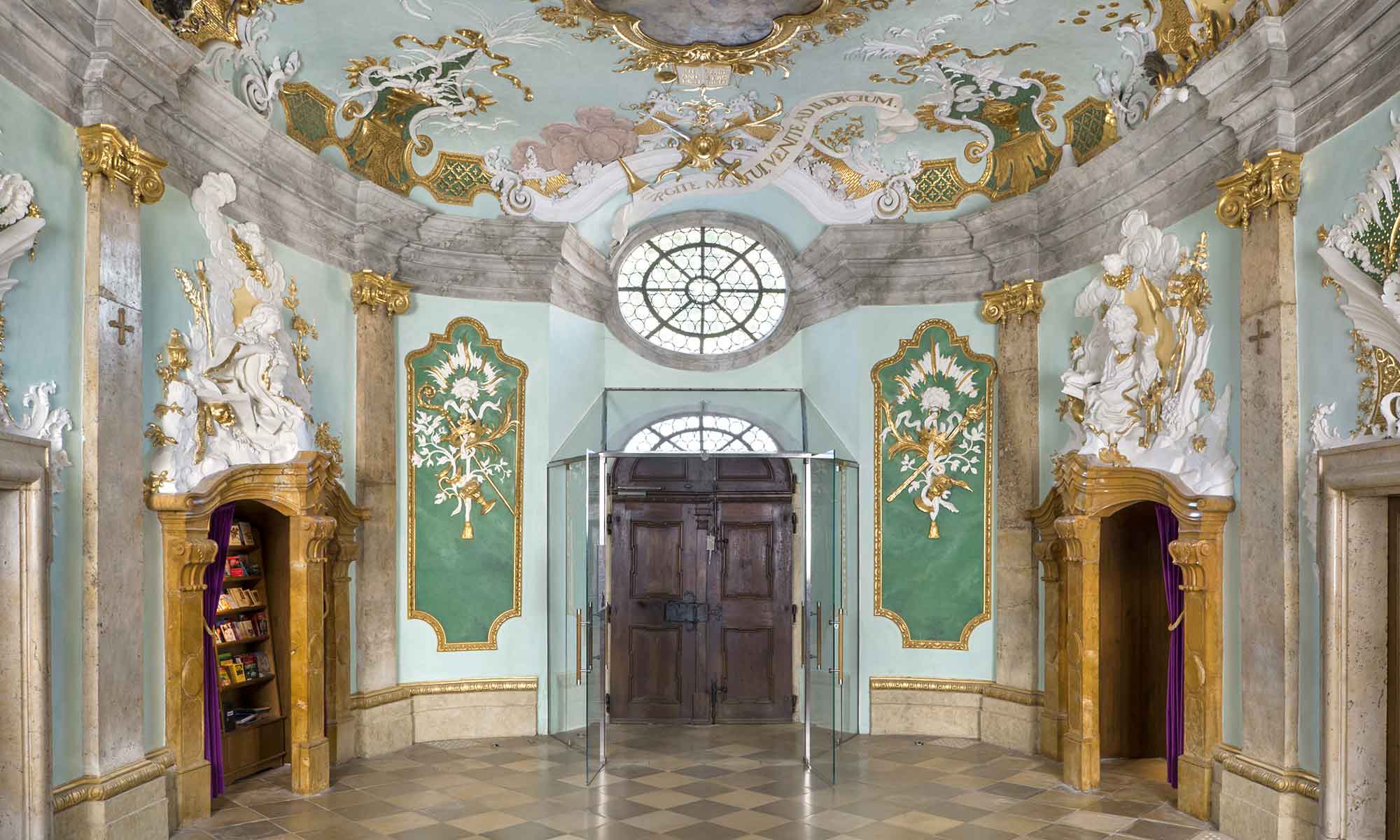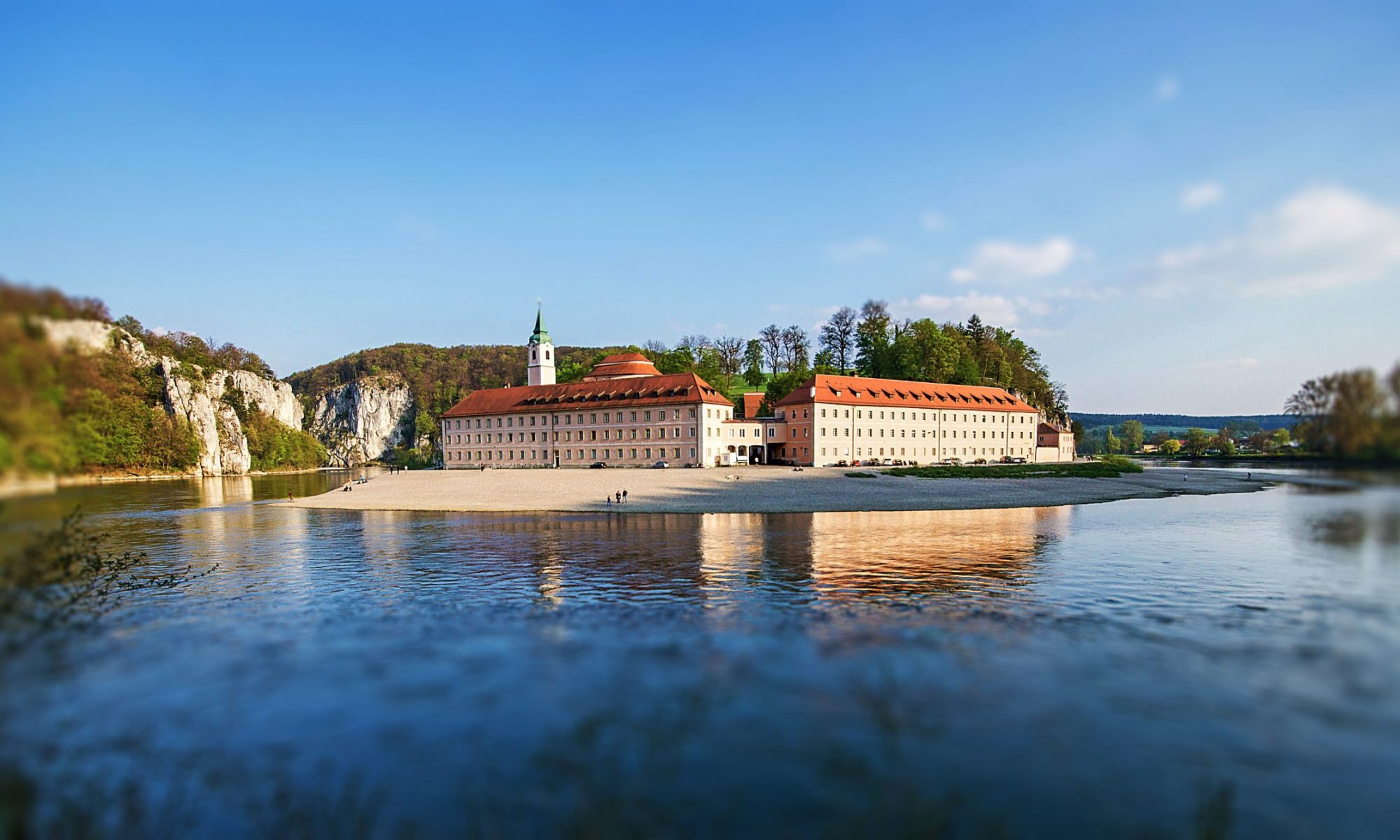The west entrance is ornamented with a traditional decorative programme of apocalyptic scenes, the central feature being F. E. Asam’s ceiling painting of the “Last Judgment” (1745). Around it are grouped his uncle’s stucco reliefs of the “Four Last Things”: Death (whose arrows none can escape); Judgment (with trumpet, book, sword, and scales); Hell (with serpent, flames and torches); and at the transition to the main part of the church, Heaven (the soul symbolized by a heart looking at the Holy Trinity). Between these images, the “Four Seasons” (flowers for spring, sheaves and fruit for summer, bare branches for autumn, and a stove for winter) express the transience of earthly life. In both form and decoration, the low vestibule anticipates the elements of the nave. Thus, the two marble confessionals by J. J. Kürschner (1736) – which bear F. A. Neu’s stucco busts of the typical penitent saints Mary Magdalen and Peter (1751) – point to the heavenly sphere depicted in the dome.


